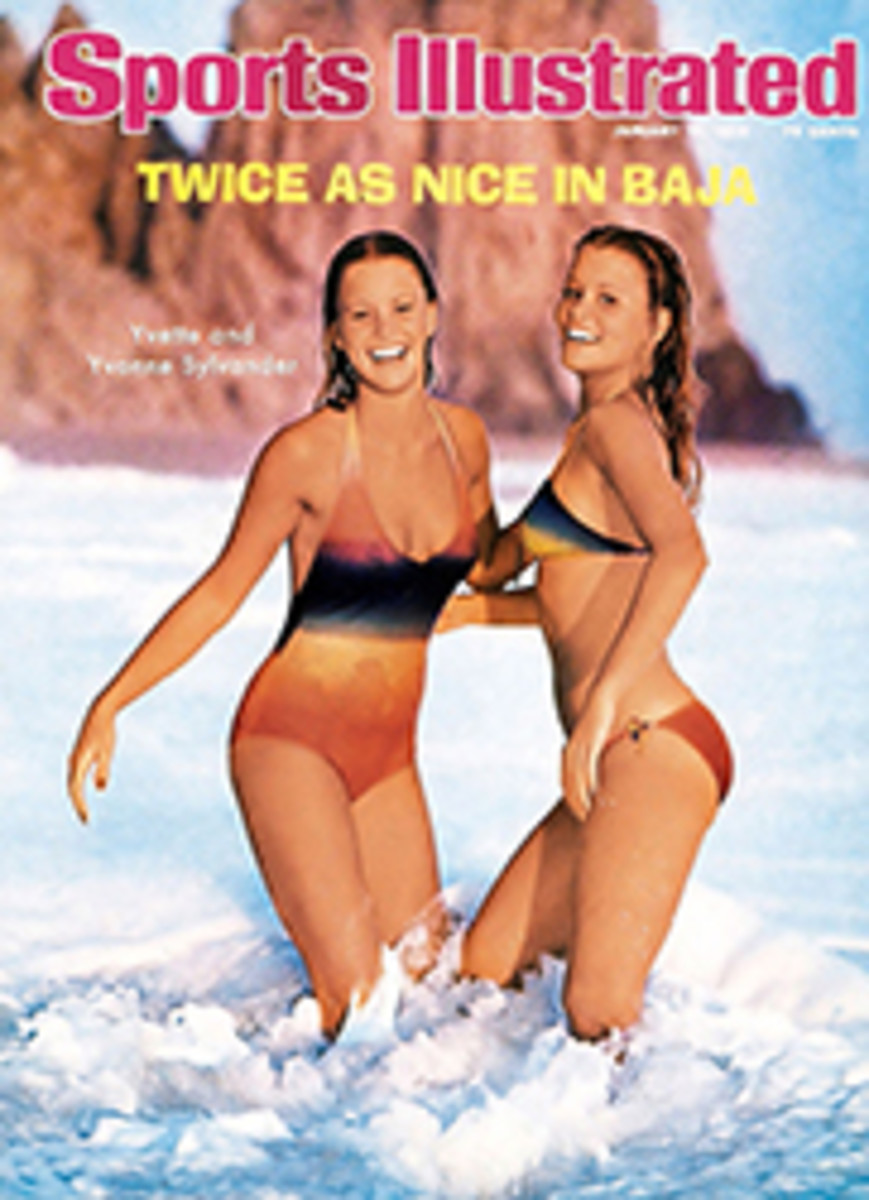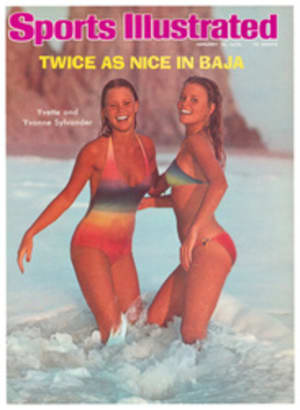
TIPS FROM THE PRO TO THE AMATEUR ON HOW TO CATCH A GIRL ON THE BEACH
You've spent three anxious days waiting, the professional has spent three hours. You're in the local photo shop or the drugstore, he's in a million-dollar color lab. The anxiety is the same; neither of you can wait to get that first look at your pictures. The pro will often be watching as his still-wet film is put in the dryer. In 15 minutes he could see it dry, but who can wait? You have yet to count your change, but already you're holding up that first transparency to the ceiling light.
Photography tends to have that effect on people, but when the pictures are of a winter vacation, the "I-just-can't-wait-to-see-how-these-came-out" feeling is 10 times as strong. It's one thing to have the whole office envious of your deep tan, but even better to rub it in by showing off the big marlin you caught or this winter's new string suits.
Well, you've had a long look now, and while the photos of the kids are O.K. and your wife is as pretty as ever, you can't understand why the pictures of that living doll you couldn't resist shooting are nowhere near as good as that of Yvette and Yvonne Sylvander, this week's cover girls. Her string suit was covering (or not covering) just as beautiful a body and her smile was a 10 on anyone's scale. So what went wrong?
The problems one encounters at the beach or out on the water are among the toughest regularly faced by the amateur. The sand acts like a giant reflector. On a bright day overexposure is not only a problem for one's skin but for one's photographs.
There is a tendency, even among pros, not to believe the light meter. If you assume that your light meter is accurate away from the beach, why should it start lying now? Follow it! Remember to move in close with your light meter and read the skin tones of your subject; do not allow the reading to be influenced by extraneous light. A simple rule of thumb is to close down the lens at least 1 to 1½ full stops. For example, when using Kodachrome 25, which 1 feel is the best film for surf and sand pictures, bright sunlight exposure away from the beach would be 1/125th at f8. On the beach this would become 1/125th between f11 and f16.
If your exposures are O.K., probably the main difference between your shots and the ones Kourken Pakchanian took on the beach at Baja is that you are photographing at the wrong time of day. Chances are that most of your pictures were taken between 10 a.m. and four p.m. This is understandable because photography is seldom one's first order of business at the beach and by late afternoon you've either used all your film, lost interest or your subjects have had enough of you and your dumb poses. The problem with shooting during these hours—it is especially bad at midday—is that you cannot avoid harsh shadows. Beautiful blue eyes don't come out well, even if you catch them between squints, when eye pockets are in shadow. The only way to get around this problem is to backlight—shoot with the sun behind your subject. You can take fine pictures this way, but they are seldom as good as ones shot late in the day.
Almost all professionally shot bathing-suit pictures are taken in the first hour after sunrise or in the hour or hour and a half before sunset. Since most of us are not at the beach at seven a.m., and even fewer are in the mood to pose then, I recommend shooting in the very late afternoon, when the light is the best. This applies to your boating shots as well. You'll find a number of things (all nice) happen when you've waited for the sun to begin to go down. Squinting is no longer a problem and her eyes, which earlier were in shadow, are now big as silver dollars, even while she is looking straight into the sun. As the sun drops closer to the horizon, your film tends to get warmer, until the skin tones become almost as pretty as the sunset itself. A word of caution about late afternoon shooting: be very careful with your exposures. The light level drops quickly, and it is necessary to consult your light meter often. One hour before sunset your Kodachrome exposure may be 1/125th at f8 (1 to 1½ f-stops less than at midday), and 30 minutes later you may easily have lost one to two stops.
Another thing to remember is that the beach and salt air are poison to your lenses and do little good to any part of your camera. I recommend using a skylight filter to protect your lens at all times. Better to have the salt air eat away at a $7 filter than at the front element of a $100 lens. When boating, especially, be sure to dry your camera quickly if it has been sprayed with salt water. On the water you might consider using a polarizing filter instead of the skylight filter. It will protect your lens as well as the skylight, and it eliminates glare and often creates a much more interesting sky, especially when there are white puffy clouds. In general it gives you the same view that you have through Polaroid sunglasses. However, when using a Polaroid filter, open up one f-stop to allow for the darkness of the filter.
Everything advocated here is equally applicable if home movie shooting happens to be your game. To sum up: shoot Kodachrome, shoot late in the day, be extra careful about your exposures and protect your equipment. Then all you have to do is let your eye rove.

